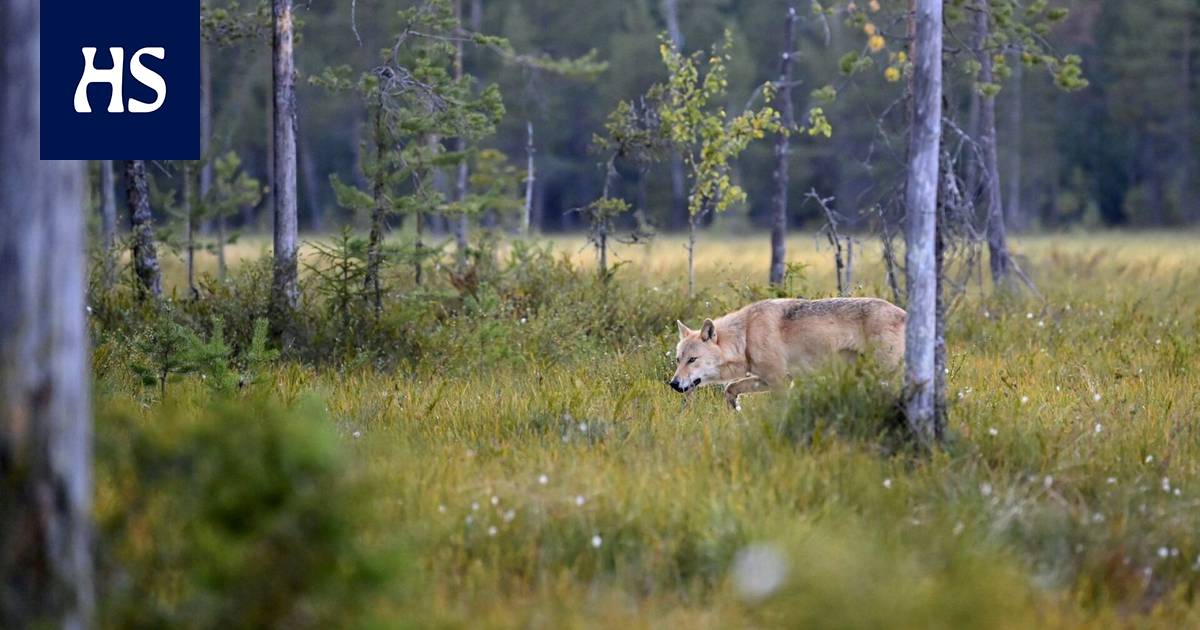Complaints about hunting permits and recent reports from the Finnish Natural Resources Agency led to a new consideration. “Certainly, the solutions will come during the fall,” says a ministry official.
The wolves hunting on the basis of population management was supposed to become possible last winter. However, this has not happened.
Last December, the Ministry of Agriculture and Forestry issued a regulation that attracted a lot of attention and controversy, allowing population hunting of up to 20 wolves.
However, exemption permits granted for hunting have been canceled in several administrative jurisdictions. The most important decision is the decision of the Turku Administrative Court from Tuesday.
The Administrative Court of Turku ruled that the purpose and justifications of the decree issued for population maintenance hunting are not sufficient. At the same time, it revoked the exemption permit granted by the Finnish Game Agency for the hunting of three wolves from last February.
Hunting the goal of the enabling regulation is that “restricted hunting of the wolf population at a favorable conservation level regulates the growth of the wolf population and aims to reduce socio-economic conflicts related to the wolf population”.
“At the same time, we wanted to promote the acceptability of the wolf so that the favorable protection level of the wolf population can be secured,” says the negotiating official Sami Niemi from the Ministry of Agriculture and Forestry.
In Finland, it is now necessary to reassess either the goal or its justifications.
“In that respect, we will now have to go to the lathe again,” Niemi tells STT.
This one in addition, the ministry is currently considering whether new conclusions should be made about population management hunting based on the new data and calculation model of the Natural Resources Agency (Luke).
A couple of weeks ago, the Swedish Natural Resources Agency published new information about the wolf population. The conclusion was that Finland’s current wolf population is too small to remain genetically viable.
Luke gave a calculation model that can be used to calculate the reference value of the favorable protection level of the wolf population. According to Luke, the size of the reference value depends on many factors, including the level of risk the decision-makers choose for the development of the wolf population. So the final assessment was left to the political decision-makers.
Thursday in the evening, the parliament will also discuss a report completed on a citizen’s initiative, which requires clarification of the Hunting Act. In this case, the regulation would allow wolf hunting on the basis of an exception permit, “if it does not harm the preservation of the favorable protection level of the species or its achievement”.
Of the MPs in the Agriculture and Forestry Committee, only the Greens Jenni Pitko and Tiina Elo and the Left Alliance Mai Kivelä resist change. According to them, this would mean lowering the hunting threshold from the current level and starting hunting before the wolf population is at a favorable conservation level.
“We strongly oppose this, because the wolf is an extremely endangered species and to prevent wolf damage, other means than shooting wolves should primarily be used.”
Wolf population management hunting should not be started for them until the minimum reference value of the wolf’s favorable conservation level based on scientific research has been reached.
Ministerial According to Sami Nieme, it is assumed that the law will be clarified according to the report, but the Minister of Agriculture and Forestry Antti Kurvinen (central) ultimately decides on the matter.
When will it be known if population management hunting of wolves will be possible in the near future?
“Solutions will certainly come during the fall,” he tells STT.
According to Niemi, the final schedule is in the hands of the minister.
Wolf is a strictly protected species in Finland outside the reindeer herding area according to the EU habitat directive. The protection can only be deviated from if a clear goal is set for hunting and it is shown that there is no other satisfactory solution.
Exemption permits can still be granted on damage and safety grounds.
It has been estimated from Luke that the smallest genetically viable population settles down to just over 500 wolves, by any calculation method. Luke’s most recent population estimate is from March, when there were approximately 300 wolves in Finland.
Puppies have been born since then, so the autumn stock is estimated to be larger. The stock is estimated to grow in the future as well, if the annual mortality remains unchanged.
Fact
The wolf is a strictly protected species, with a population of about 300 in March
-
According to the EU habitat directive, the wolf is a strictly protected species in Finland outside the reindeer herding area. The protection can only be deviated from if a clear goal is set for hunting and it is shown that there is no other satisfactory solution.
-
Exemption permits can be granted on damage and safety grounds.
-
It has been estimated from the Natural Resources Center (Luke) that the genetically smallest viable population settles down to just over 500 wolves, by any calculation method. Luke’s most recent population estimate is from March, when there were approximately 300 wolves in Finland.
-
Puppies have been born since then, so the autumn stock is estimated to be larger. The stock is estimated to grow in the future as well, if the annual mortality remains unchanged.
#Wolves #ministry #rewrite #regulation #wolf #population #management #hunting






:format(jpeg):fill(f8f8f8,true)/s3/nrctest.static/taxonomy/e70939d-youp-portrait%2520%25281%2529.png)

